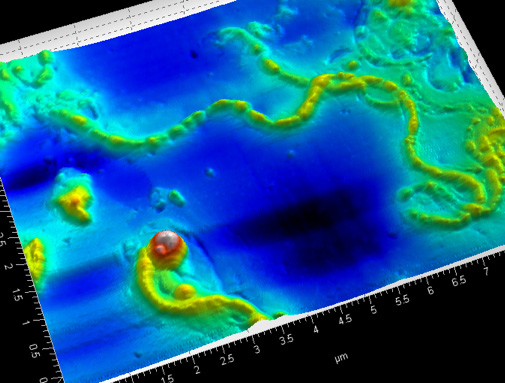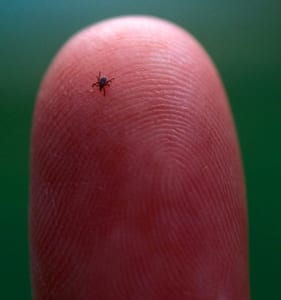
The Centers for Disease Control and Prevention estimate that 300,000 people are diagnosed with Lyme disease in the US every year. That’s 1.5 times the number of women diagnosed with breast cancer, and six times the number of people diagnosed with HIV/AIDS each year in the US. However, because diagnosing Lyme can be difficult, many people who actually have Lyme may be misdiagnosed with other conditions. Many experts believe the true number of cases is much higher.
Lyme disease affects people of all ages. The CDC notes that it is most common in children, older adults, and others such as firefighters and park rangers who spend time in outdoor activities and have higher exposure to ticks.
LymeDisease.org has developed a Lyme disease symptom checklist to help you document your exposure to Lyme disease and common symptoms for your healthcare provider. You will receive a report that you can print out and take with you to your next doctor’s appointment.
What is Lyme disease?

Image of B. burgdorferi under atomic force microscope. Courtesy of Dr. Eva Sapi.
Lyme disease is caused by a spirochete—a corkscrew-shaped bacterium called Borrelia burgdorferi. Lyme is called “The Great Imitator,” because its symptoms mimic many other diseases. It can affect any organ of the body, including the brain and nervous system, muscles and joints, and the heart.
Patients with Lyme disease are frequently misdiagnosed with chronic fatigue syndrome, fibromyalgia, multiple sclerosis, and various psychiatric illnesses, including depression. Misdiagnosis with these other diseases may delay the correct diagnosis and treatment as the underlying infection progresses unchecked.
How do people get Lyme disease?
Most people get Lyme from the bite of the nymphal, or immature, form of the tick. Nymphs are about the size of a poppy seed. Because they are so tiny and their bite is painless, many people do not even realize they have been bitten.
Once a tick has attached, if undisturbed it may feed for several days. The longer it stays attached, the more likely it will transmit the Lyme and other pathogens into your bloodstream. Refer to tick section.

Where is Lyme disease found?
Lyme disease has been found on every continent except Antarctica. It is found all across the United States, with a particularly high incidence in the East, Midwest, and West Coast. Rates have increased significantly over time. Some of this increase may be because of disease spread, but it is also likely that it reflects growing public awareness of the disease.
Not all ticks are infected. Within endemic areas, there is considerable variation in tick infection rates depending on the type of habitat, presence of wildlife and other factors. Tick infection rates can vary from 0% to more than 70% in the same area. This uncertainty about how many ticks are infected makes it hard to predict the risk of Lyme disease in a given region.
In the South, a Lyme-like disease called STARI (Southern Tick-Associated Rash Illness) transmitted by the Lone Star tick has been described. Scientists are still debating about what organism(s) in the Lone Star tick may cause the disease as well as the treatment of patients with a rash in the South. However, Lyme disease has been reported in certain areas of the South and Southeast and patients with STARI may be quite ill. Because of this, patients in the South with a rash should be treated. (Herman-Giddens 2014)
The risk of getting Lyme disease is often reflected in risk maps. Some maps show the number of human cases of Lyme disease reported for surveillance. These maps may not accurately reflect risk because only 10% of reportable Lyme cases are currently captured by CDC surveillance. Other risk maps show the number of infected ticks that researchers have collected in a certain area. These maps are often not accurate because many states and counties have done little or no testing of ticks in the area. The best maps of risk may be canine maps. This is because dogs are routinely screened for Lyme disease through a nationwide program as well as the close association of dogs with humans.






